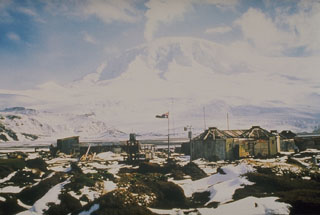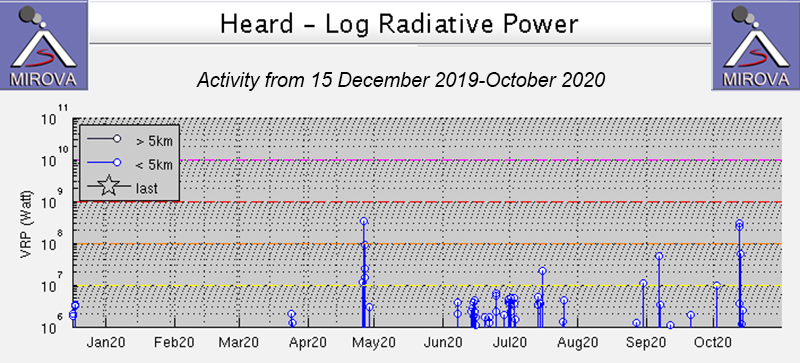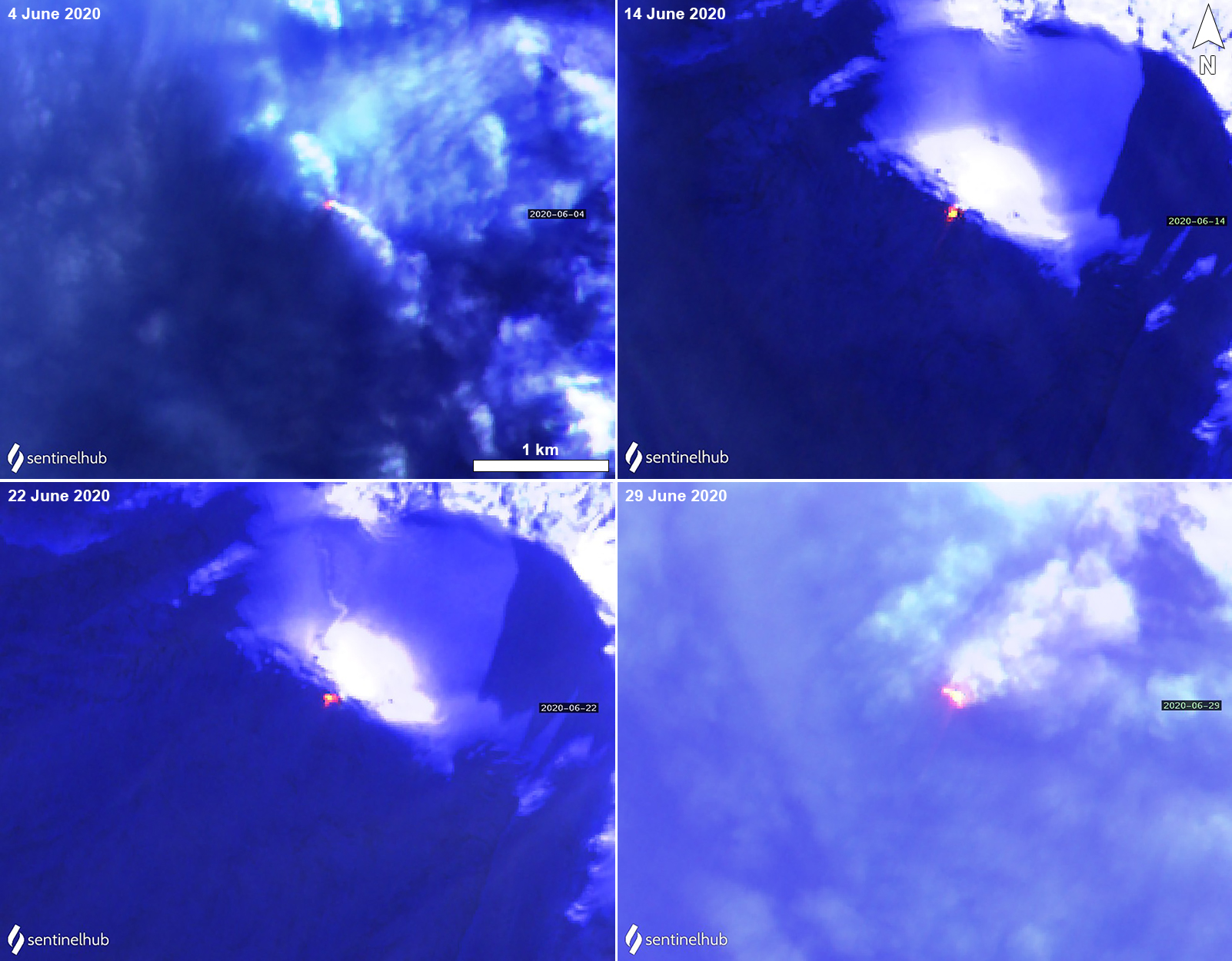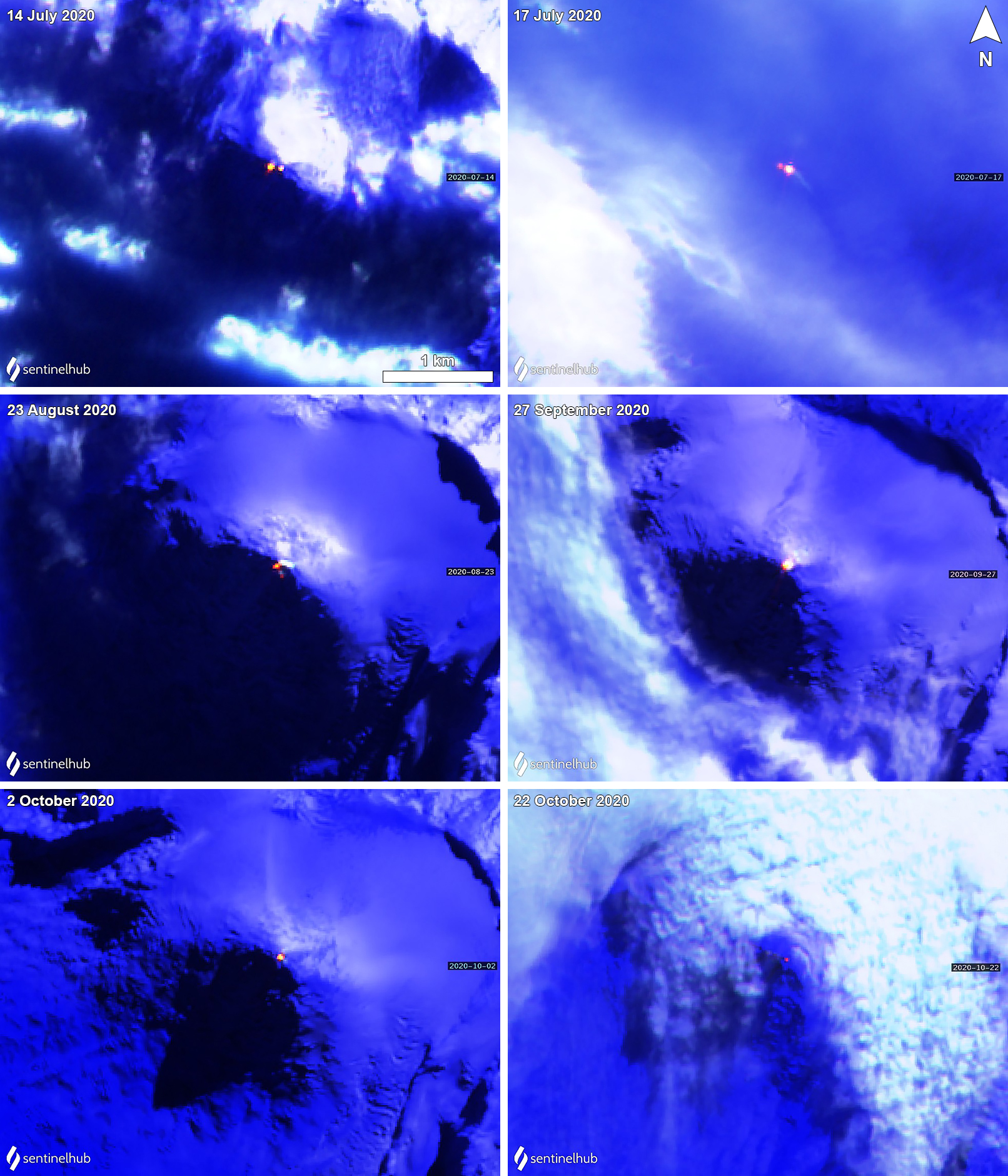Report on Heard (Australia) — November 2020
Bulletin of the Global Volcanism Network, vol. 45, no. 11 (November 2020)
Managing Editor: Edward Venzke.
Edited by Kadie L. Bennis.
Heard (Australia) Persistent thermal anomalies in the summit crater from June through October 2020
Please cite this report as:
Global Volcanism Program, 2020. Report on Heard (Australia) (Bennis, K.L., and Venzke, E., eds.). Bulletin of the Global Volcanism Network, 45:11. Smithsonian Institution. https://doi.org/10.5479/si.GVP.BGVN202011-234010
Heard
Australia
53.106°S, 73.513°E; summit elev. 2745 m
All times are local (unless otherwise noted)
The remote Heard Island is located in the southern Indian Ocean and contains the Big Ben stratovolcano, which has had intermittent activity since 1910. The island’s activity, characterized by thermal anomalies and occasional lava flows (BGVN 45:05), is primarily monitored by satellite instruments. This report updates activity from May through October 2020 using information from satellite-based instruments.
MIROVA (Middle InfraRed Observation of Volcanic Activity) analysis of MODIS satellite data showed frequent thermal activity in early June that continued through July (figure 43). Intermittent, slightly higher-power thermal anomalies were detected in late August through mid-October, the strongest of which occurred in October. Two of these anomalies were also detected in the MODVOLC algorithm on 12 October.
Sentinel-2 thermal satellite imagery showed a single thermal anomaly on 3 May. In comparison to the MIROVA graph, satellite imagery showed a small pulse of strong thermal activity at the summit of Big Ben in June (figure 44). Some of these thermal anomalies were accompanied by gas-and-steam emissions. Persistent strong thermal activity continued through July. Starting on 2 July through at least 17 July two hotspots were visible in satellite imagery: one in the summit crater and one slightly to the NW of the summit (figure 45). Some gas-and-steam emissions were seen rising from the S hotspot in the summit crater. In August the thermal anomalies had decreased in strength and frequency but persisted at the summit through October (figure 45).
Geological Summary. Heard Island on the Kerguelen Plateau in the southern Indian Ocean consists primarily of the emergent portion of two volcanic structures. The large glacier-covered composite basaltic-to-trachytic cone of Big Ben comprises most of the island, and the smaller Mt. Dixon lies at the NW tip of the island across a narrow isthmus. Little is known about the structure of Big Ben because of its extensive ice cover. The active Mawson Peak forms the island's high point and lies within a 5-6 km wide caldera breached to the SW side of Big Ben. Small satellitic scoria cones are mostly located on the northern coast. Several subglacial eruptions have been reported at this isolated volcano, but observations are infrequent and additional activity may have occurred.
Information Contacts: MIROVA (Middle InfraRed Observation of Volcanic Activity), a collaborative project between the Universities of Turin and Florence (Italy) supported by the Centre for Volcanic Risk of the Italian Civil Protection Department (URL: http://www.mirovaweb.it/); Hawai'i Institute of Geophysics and Planetology (HIGP) - MODVOLC Thermal Alerts System, School of Ocean and Earth Science and Technology (SOEST), Univ. of Hawai'i, 2525 Correa Road, Honolulu, HI 96822, USA (URL: http://modis.higp.hawaii.edu/); Sentinel Hub Playground (URL: https://www.sentinel-hub.com/explore/sentinel-playground).




